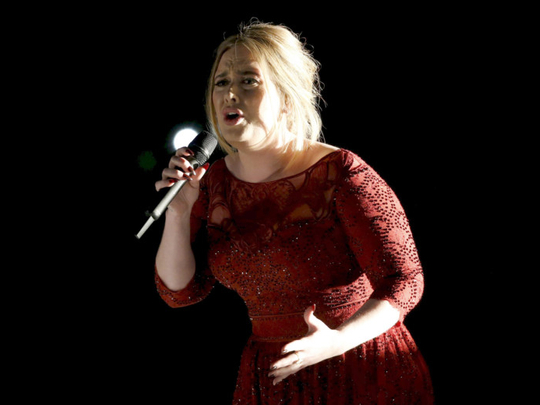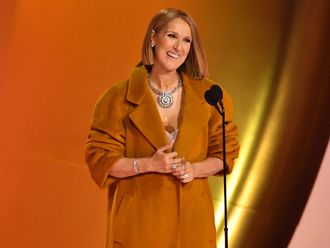
Adele has signed a new ₤90 million (Dh478.99 million) deal with Sony — which if, it happens, would make it the most lucrative record contract for both a British artist and a female pop star ever.
But while Adele will rolling in the deep pockets, how well have other mega-money records deals paid off?
REM $80 million (Dh293.76 million) Warner Bros, 1996
Why they paid it: In August, 1996, REM were the biggest rock band on the planet, riding a decade of indie love on IRS, plus the commercial and critical smashes of Automatic for the People, Out of Time, Monster and Green. They renewed their deal with Warner with a $10 million signing bonus, a $20 million advance, 24 per cent royalties and a $10 million advance for each of their next six albums. REM repaid the favour the following month with the decisively hit-free New Adventures in Hi-Fi.
Was it worth it? REM never reached the commercial highs of the early 90s again, New Adventures was their last platinum album in the US. After the last in their six-album deal — 2011’s Collapse Into Now, they collapsed into retirement.
What a waste of money!
Mariah Carey $80 million Virgin/EMI, 2001
Why they paid it: From her debut in 1990, Carey spent the decade tearing up the charts — 1993’s Music Box sold 32 million copies, 1995’s Daydream, 25 million. By the time her deal with Sony’s Columbia Records was done, she was a no-brainer, at any price.
Was it worth it? Ixnay! After Glitter, the first album of the deal was released on — oh, Mariah — September 11, 2001, to a critical mauling and (relatively) dreadful sales. EMI decided to cut their losses and paid Carey $28 million to go away rather than commit to the cost of more albums. A shame, then, that 2005’s The Emancipation of Mimi sold over 12 million copies worldwide (Adele’s 25 has sold 19 million).
Robbie Williams ₤80 million EMI, 2002
Why they paid it: Nine months after paying Carey to shut the door on her way out, EMI made Robbie “rich beyond his wildest dreams” with this six-album deal. Williams had sold 20 million albums at this point, and the deal gave EMI a cut of merchandise, touring and publishing rights (a precursor to similar mega-money deals signed by Madonna and Jay Z with Live Nation). Given the coming financial armageddon in the record industry, a canny move.
Was it worth it? Robbie’s first album of the deal, Escapology, sold over quarter of a million copies in a week and in 2003, he would play to 375,000 at Knebworth. Robbie’s next three albums would also go multi-platinum, too — but, in 2007, EMI was bought in a leveraged deal by venture capitalists Terra Firma, just as the music industry collapsed. Robbie’s contract was one of the assets transferred to Universal when it bought the stricken EMI. Earlier this month he signed a new worldwide deal with Sony.
Whitney Houston $100 million Arista/Sony, 2001
Why they paid it: Whitney was already Arista’s biggest artist (her Bodyguard soundtrack sold 42 million copies) — when she came to renewing her contract, Arista’s new head LA Reid was in the midst of a golden run with albums from Usher (8701), Pink (Missundaztood) and Outkast (Stankonia). Her last album, 1998’s My Love Is Your Love had sold 10 million copies. Another multi-album deal seemed like obviously good business.
Was it worth it? No. The new deal coincided with Houston’s spiralling personal issues. She managed two studio albums — 2002’s Just Whitney and 2009’s I Look To You — and one Christmas collection, before her death in 2012.













